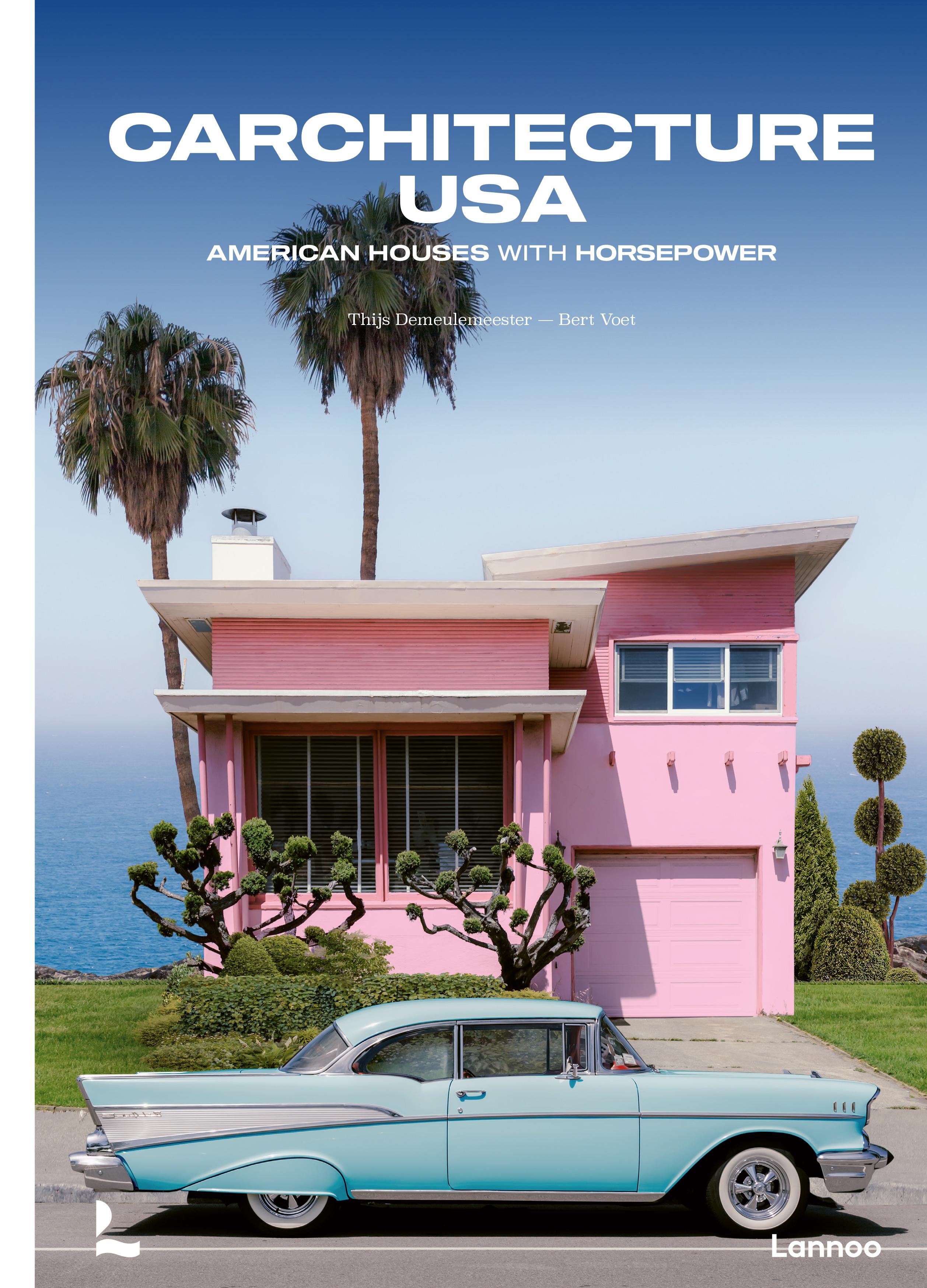

CHAPTERS
Rolls-Royce Silver Cloud II Drophead Coupé
ARCHITECTURE In February 2016 the Los Angeles County Museum of Art (LACMA) was gifted a textbook example of carchitecture. James Goldstein not only donated to the museum his legendary Sheats–Goldstein Residence (1963) by American architect John Lautner, he also gave it his 1961 Rolls-Royce Silver Cloud II Drophead Coupé. The donation marked the start of an ‘architecture collection’ at LACMA. Originally built for Helen and Paul Sheats, the iconic home was purchased by Goldstein in 1972, barely ten years after its construction, despite its dilapidated state. Together with the architect, he continued to work on the house until his death in 1994.
Lautner (1911–1994), while not as fervent a car enthusiast as his mentor Frank Lloyd Wright, shared with him a love for projects which allowed them the latitude to conceive every last detail, right down to the carpets and furniture. This can clearly be seen in the Sheats–Goldstein Residence, which gained iconic status, not only for its underlying architectural concept—a house under a triangular canopy of concrete—but also due to its appearances in an array of mainstream films, music videos and TV series, including The Big Lebowski, Charlie’s Angels and Snowfall
CAR Built from 1955 to 1966, the Silver Cloud is for many the most beautiful Rolls-Royce ever designed. It was the ultimate luxury car, one that was very much at home in Hollywood—Brigitte Bardot, among others, had one—and, in the spirit of the brand at the time, this RollsRoyce was also known for its reliability. In 1959 the inline 6-cylinder engine was replaced by an aluminium V8 inspired by Buick’s, which would be improved until the 1990s. The second series we see here was very successful in the US. “At 60 miles an hour the loudest noise in this new Rolls-Royce comes from the electric clock,” went the legendary slogan. The fact that Rolls-Royce always built noiseless engines makes the switch to electric power today more logical than for brands that always took pride in their distinctive sound. The convertible versions of the Silver Cloud were built at H.J. Mulliner & Co., which was acquired by Rolls-Royce in 1959.
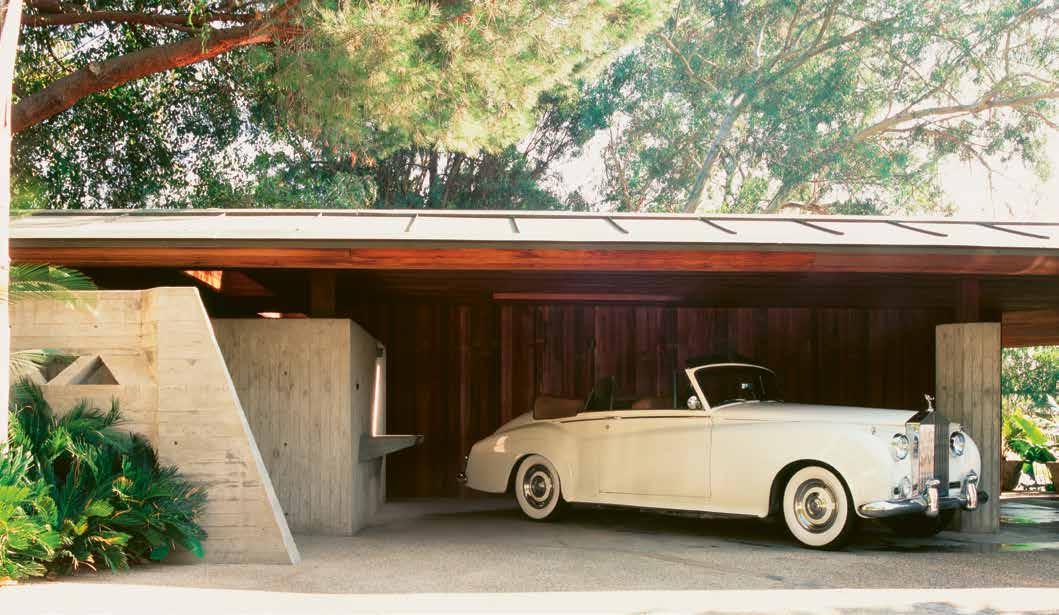
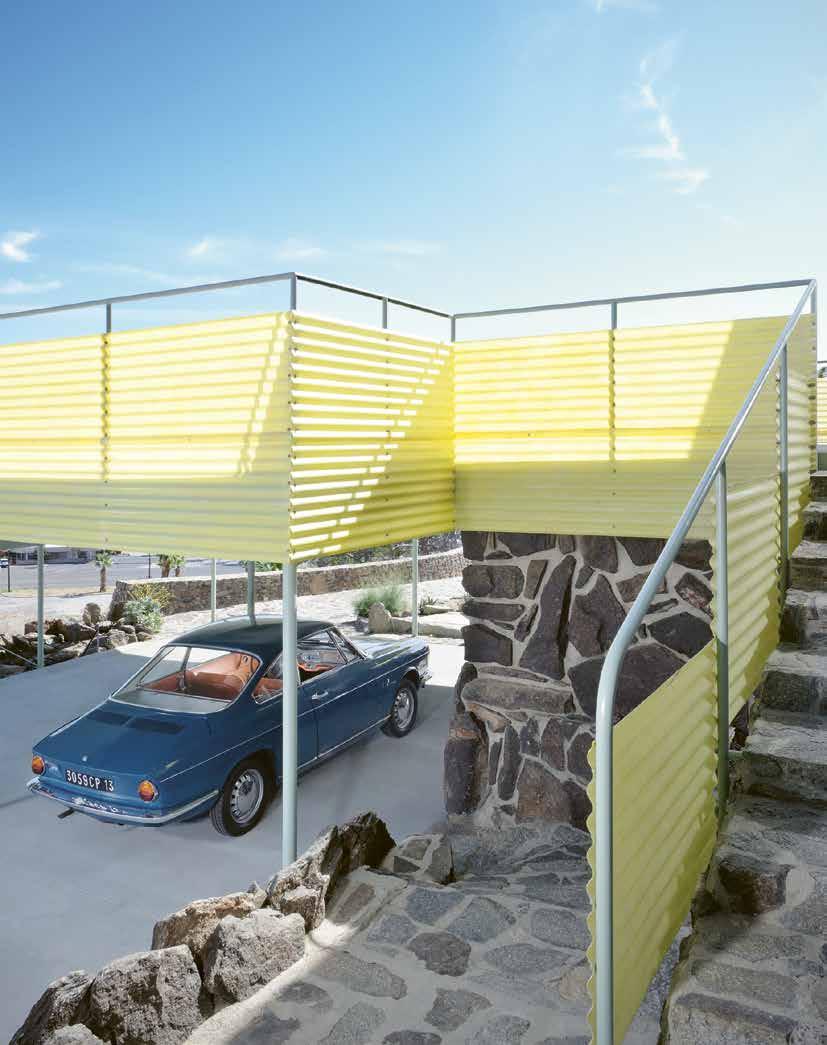
Simca 1000 Coupé
ARCHITECTURE
This 1955 Cree House is nicknamed ‘the forgotten Frey,’ not because it is inconspicuous: the private residence, instantly recognizable by its sage-green asbestos façade cladding and yellow fiberglass balustrade wrapped around the terrace, is clearly visible from Palm Canyon Drive. ‘Forgotten’ refers to the fact that the house, built on the border between Palm Springs and Cathedral City, long remained under the radar because the previous owners did not welcome architectural enthusiasts. Cree House is vintage Albert Frey (1903–1998), the Swiss architect and student of Le Corbusier who is often regarded as the pioneer of Desert Modernism in California. Frey not only built several villas in the Californian desert, but also the iconic Tramway Gas Station, now the much-photographed Palm Springs Visitor Center. Raymond Cree, the original owner of the house, originally asked Frey in 1947 to build a luxury hotel on this rocky plot. The blueprints looked promising, but were never realized. At age 82, Cree commissioned Frey to build him a house on the vacant lot: a simple private home with a $40,000 budget. After Cree, the Harris family took the reins and lovingly restored the house to its former 1955 splendor. Remarkably, the original three-door wall-hanging refrigerator/freezer is still there, although, due to a lack of spare parts, Harris had a local car mechanic repaint the doors in their original color.
CAR The Simca 1000 Coupé’s handsome bodywork was designed by the young Giorgetto Giugiaro at Bertone in Turin, which also produced it from 1962. The engine was in the rear, but at 944cc and 52 hp, it remained a modest source of power. With the arrival of the externally only slightly modified 1200S in 1967, the car got two carburettors, giving it 80 hp and reaching 108 mph (175 kph). Nevertheless, labels such as ‘pseudo-sporty’ and ‘a sheep in wolf’s clothing’ continued to haunt it. The radiator was brought forward, as a result of which a grille appeared at the front of the hood: a visual element borrowed from the Lamborghini Miura. The 1200S remained in production until 1971. The coupés were quite successful in the Simca’s native France, less so abroad.
Citroën SM
ARCHITECTURE During the interwar period, Palm Springs already attracted a great many Hollywood film stars and celebrities, who were drawn to its spectacular desert and mountain landscapes. However, it wasn’t until after World War II that the division and utilization of land gained momentum, fuelled by the entrepreneurial spirit of the Alexander Construction Company and the Meiselman family, among others. They built thousands of affordable midcentury-style villas, in collaboration with architects such as Donald Wexler, Dan Palmer and William Krisel. This construction frenzy turned Palm Springs into the American mecca of modernism. Designed by Palmer & Krisel, this 1958 Alexander House on 815 Camino Sur is a favorite photo spot for many architecture enthusiasts in Palm Springs. The residence is often graced with a carefully selected car parked outside the door, especially during Modernism Week. Just around the corner from this picture-perfect beauty lies Elvis Presley’s so-called Honeymoon Hideaway, the Alexander family’s private residence, designed in 1960 by the very same architect, William Krisel.
CAR If the Citroën DS is considered a work of art, then the SM can only be described as its superlative counterpart—a masterpiece whose very existence brings sheer joy. It was unveiled in 1970 as the epitome of a fast, comfortable travel car, or Gran Turismo—a concept that only Citroën could conceive of that way. Viewed from above, the SM takes on the shape of a teardrop, boasting a wide prow and a fine rear, contributing to its low aerodynamic drag.
The chief designer of this marvel was Robert Opron, wo died in 2021, a luminary in the world of automotive design, known for his remarkable humility. The technical team led by Jacques Né also played an indispensable role in the creation of the SM and its groundbreaking innovations. In addition to its hydropneumatic suspension with level control, it featured self-centring, speed-dependent power steering. In 1968, Citroën had taken over Maserati specifically for the developed of the V6 engine used in the SM. However, both the car and engine proved to be so intricate and delicate that even Citroën’s own mechanics sometimes struggled to repair them.
After a production run of just five years, during which almost 13,000 cars were sold, production of the SM came to an end.
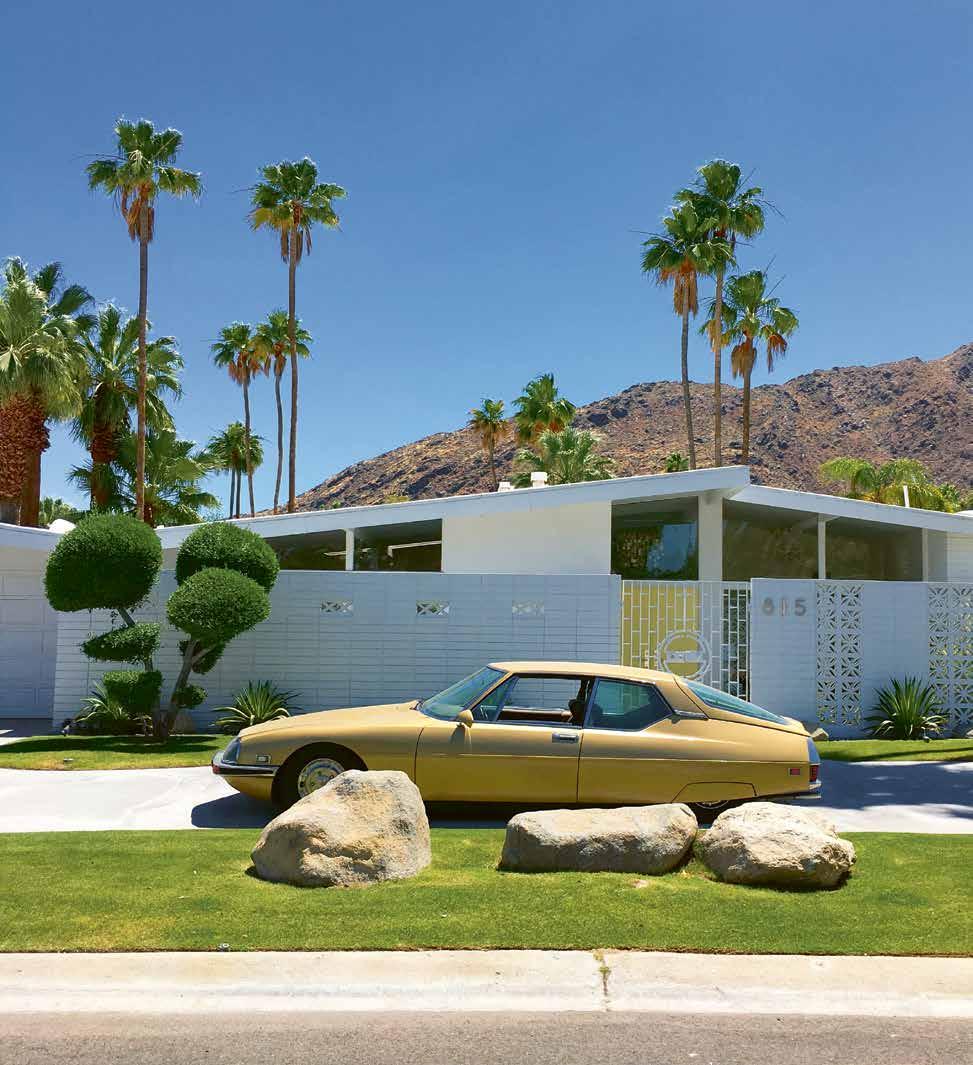

Cadillac Eldorado Convertible
ARCHITECTURE A Cadillac Eldorado in one of Palm Springs’ architectural Eldorados: Victoria Park, also known as Vista Norta, the neighborhood squeezed between Raquet Club and Vista Chino. In the neighborhood, there’s an abundance of modernist atomic ranches. Most of them are Alexander Houses, but you'll also encounter some realizations by the talented brothers Jack and Bernie Meiselman, like this one.
CAR The Cadillac Eldorado, introduced in 1952 as a concept car to commemorate Cadillac’s 50th anniversary, made its production debut the following year. The Eldorado nameplate remained in use until 2002. Here we see a 1975 or 1976 convertible Eldorado, often jokingly referred to as ‘Eldoradosaurus.’ It was one of the bulkiest cars ever built by Cadillac and marked the end of the era of massive American cruisers. Powering this model was a colossal 500 cubic-inch V8 engine, making it the largest V8 ever installed in a production car. However, the car industry changed dramatically during the 1970s due to introduction of the first emissions regulations. As a result, the massive engine’s output dropped from 400 to a mere 190 hp between 1970 and 1976. From then on, American cars became smaller, lighter and more fuel-efficient, while also gaining improved agility and smoother performance.
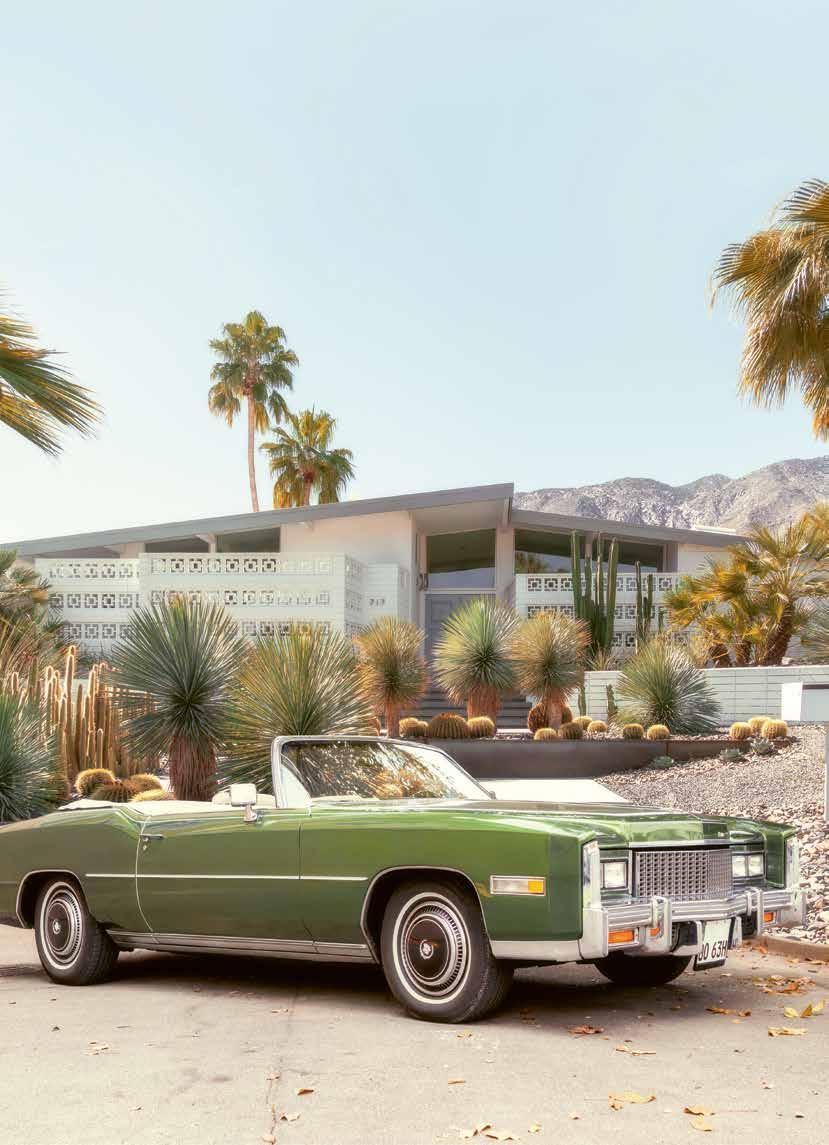
Chrysler New Yorker 2-door Hardtop
ARCHITECTURE Australian photographer Tom Ferguson came across this striking example of carchitecture in Sandcliff, an unusual cluster of about 40 similar homes in Palm Springs. These residences all feature characteristic concrete breeze blocks—decorative walls that ensure privacy while also filtering sunlight and blocking wind. Such breeze blocks were a typical feature of modernist architecture in Palm Springs during the 1950s and 1960s. Sandcliff itself dates back to the early 1960s, with the completion of its first house in 1960. In 1966, when another developer completed the remaining homes on the 4.5-acre plot, the project was rebranded as Garden Villas—a marketing decision aligning it with the developer’s other real-estate ventures in Palm Springs, namely Villa Riviera and Villa Roma. Despite this rebranding, Sandcliff eventually reverted to its original name, and the project was designated a Class I Historic Site. Even the official nameplate underwent restoration to its original typeface, preserving the historical integrity of this architectural gem.
CAR The New Yorker nameplate made its grand entrance in 1939 and reigned as Chrysler’s flagship until 1996, serving as the showpiece of Chrysler’s craftsmanship. In 1960 the sixth generation New Yorker marked a significant departure from the traditional body-on-frame construction with the introduction of a unibody chassis. This iteration was available in various body styles, including sedan, two-door hardtop, four-door hardtop, convertible and Town & Country station wagon, catering to diverse preferences. All variants boasted a robust 413 cubic-inch V8 engine, which underwent gradual improvements over time, resulting in enhanced power output. The exterior styling also evolved, initially reflecting strong influences from Virgil Exner’s design ethos, known as the ‘Forward Look,’ before transitioning towards a more angular aesthetic.
Inside the new Yorker is the iconic and futuristic AstraDome instrument cluster adorned with an electroluminescent lighting system, complemented by an abundance of ornamental detailing in chrome and stainless steel.
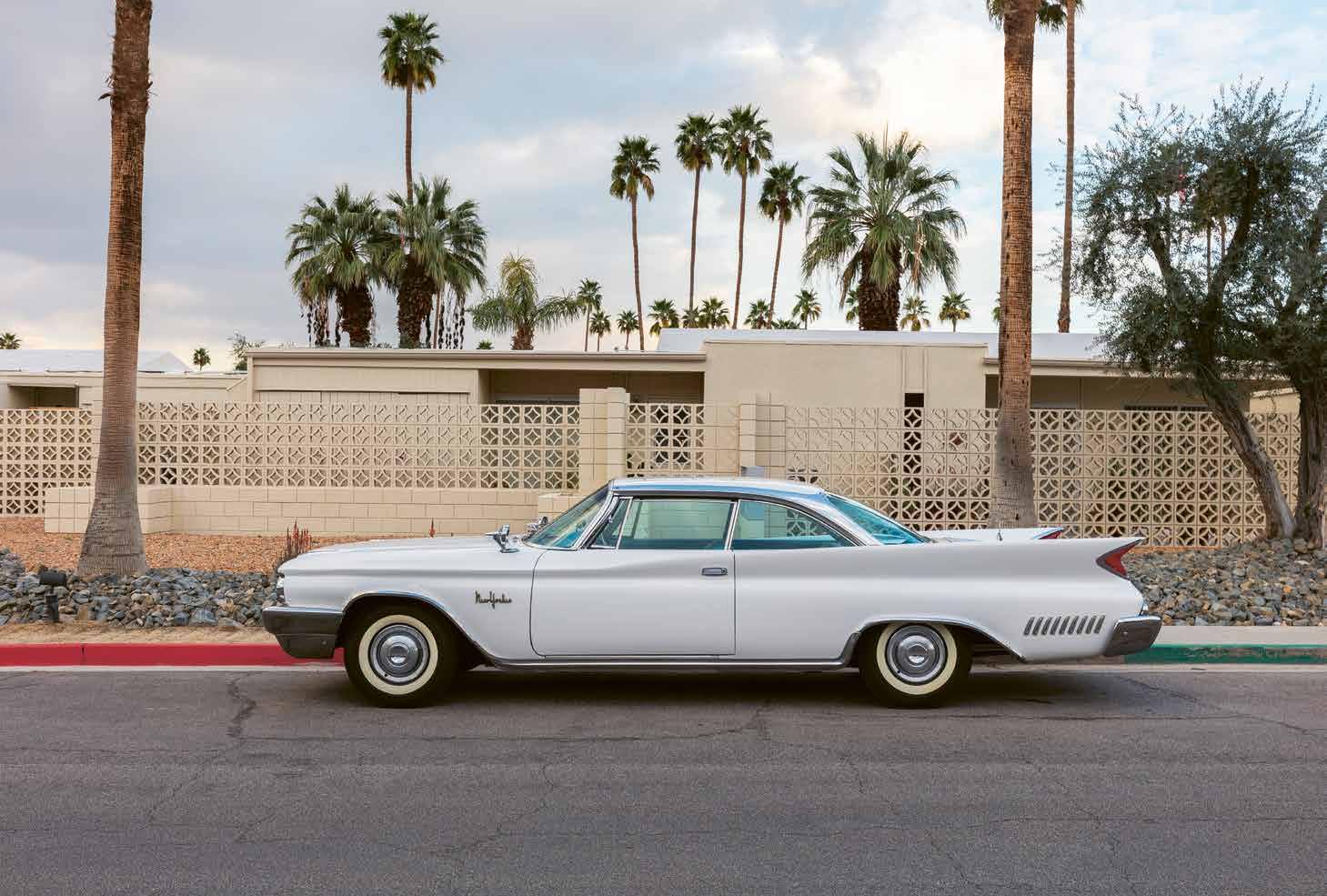
1960

Oldsmobile Super 88 Holiday Sport Sedan
ARCHITECTURE Palm Springs was the ‘Desert Utopia’ of the Hollywood elite, boasting an oasis of modernist gems meticulously crafted over three decades by enterprising developers, including Roy Fey and his son Robert. Roy Fey moved from Chicago to Palm Springs in 1956 with the sole intention of erecting the Desert Skies Hotel. However, his trajectory took a different turn, and he emerged as an iconic real-estate developer who shaped the region’s architectural tapestry. One of the best-known projects of the father–son duo was Canyon View Estates, the setting of this residence. An advertisement from 1965 touted it as ‘prestige homes for people of prestige, who appreciate the very best.’ This cluster of airy homes, recognizable by their stacked-brick façade, was designed by the renowned firm Palmer & Krisel in the early 1960s. Initially slated for 225 houses, 45 were eventually scrapped in favor of public green space.
CAR In 1959, Oldsmobile presented three distinct series: the Dynamic 88, the high-performance Super 88 and the ultra-luxurious Ninety-Eight. Following the trend set by its counterparts in other GM divisions, these models were lower, longer and had wider designs. Embracing the ‘Linear Look’ concept, Oldsmobile introduced vehicles featuring expansive hoods, roof sand boots, along with ‘vistapanoramic’ windscreens.
The exterior design boasted long flowing lines and sculpted sheet metal, exemplified by the Sport sedan’s unique, unobstructed roofline devoid of a B pillar and an elegant wrap-around rear window, providing passengers with exceptional views of the surroundings. Unlike many contemporaneous models with prominent and angular fins, Oldsmobile opted for relatively subdued oval variants, and compared to its 1958 predecessor, featured significantly less chrome embellishment, resulting in a cleaner aesthetic that emphasized the car’s refined lines.
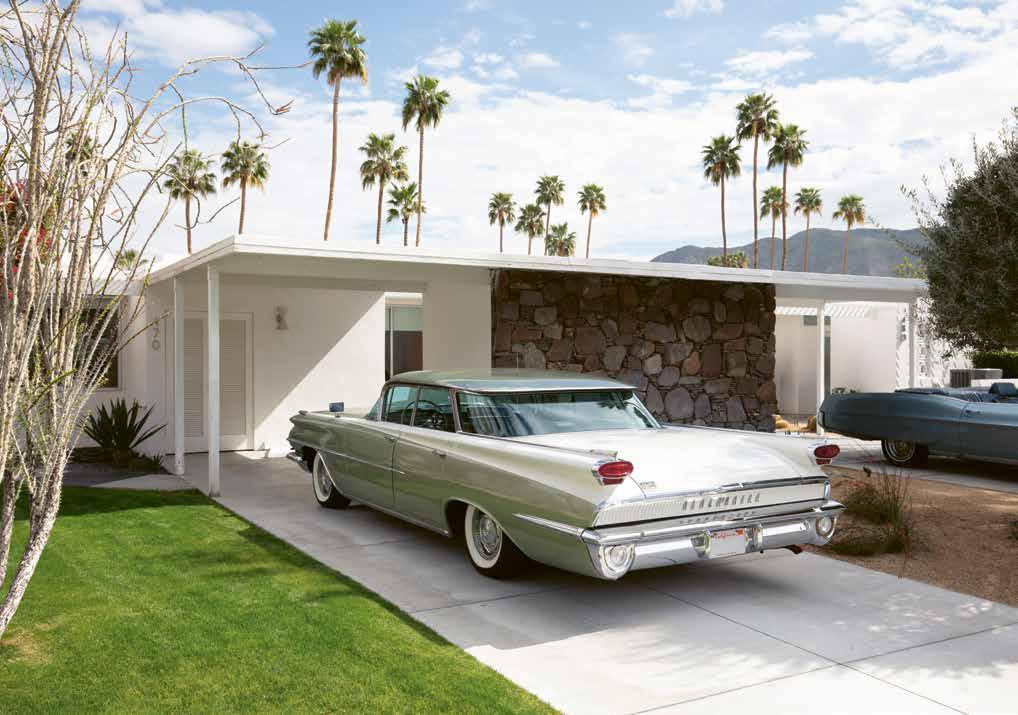
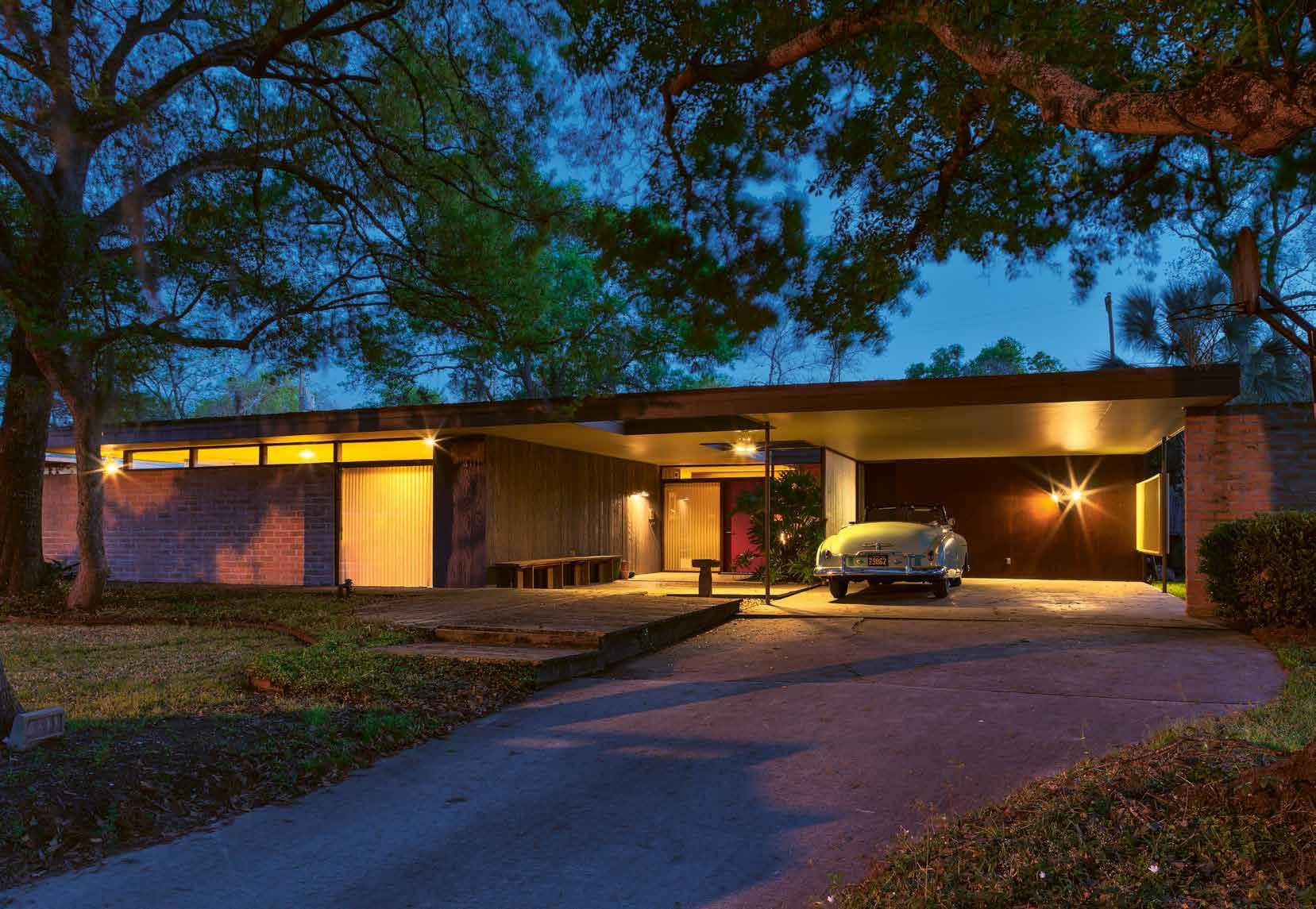
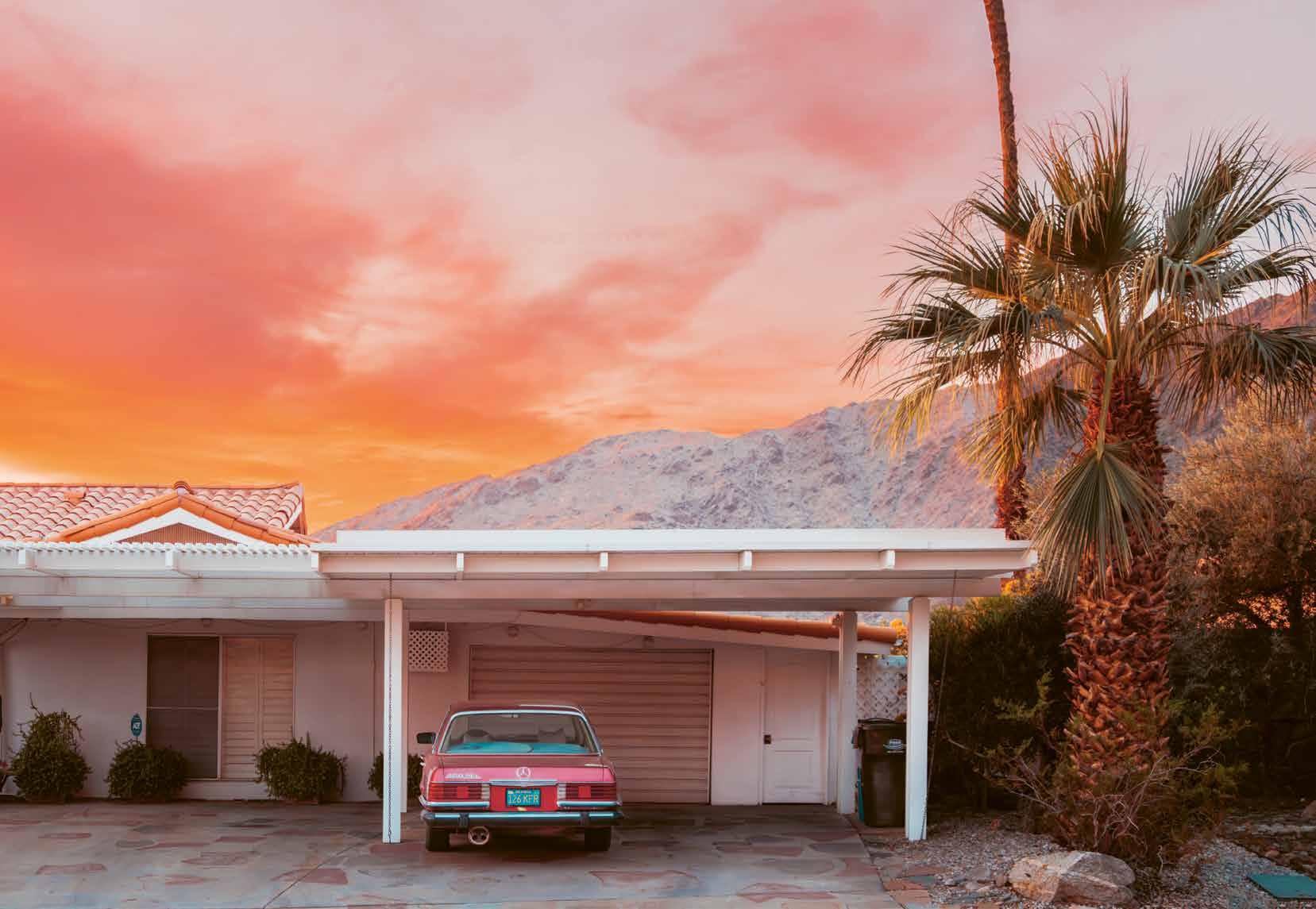
Mercedes-Benz 450 SEL
ARCHITECTURE In the bright midday sun, photo shoots in Palm Springs can sometimes ‘burn out’ with excessive brightness. Photographer Tom Blachford devised a solution by shooting the mid-century homes alongside complementary vintage cars illuminated solely by the soft glow of the full moon. His colleague, Ludwig Favre, adopts a slightly different approach. He shot this 450 SEL in the early hours of the day, when the morning light gently brightens the sky, perfectly harmonizing with the Mercedes’ body color to create a captivating juxtaposition of carchitecture and nature.
CAR The W116 series made its debut in 1972 and marked the first time Mercedes-Benz officially designated its flagship model as the S-Class (which stands for Sonderklasse or special class). The man behind the design was Friedrich Geiger, a designer renowned for his work on pre-World War II classics, like the 540 K and the later 300 SL Gullwing. The styling represented a departure from the past, taking into account both passive safety and aerodynamics. As a result, Mercedes cars of this era were longer, wider and lower, boasting cleaner lines both externally and internally.
This 450 SEL, with an extended 10 cm wheelbase, was the top-tier model in the lineup. The base of the indestructible V8 engine had been in use since 1963 and now produced 225 hp. Later, Mercedes-Benz introduced the 6.9 variant, a hyperperformant car with a monstrous engine that produced 286 hp.
Traditionally, the S-Class has been the platform for Mercedes-Benz to introduce pioneering technical innovations. For instance, in 1978, the W116 model was among the first to offer ABS (Anti-lock Braking System) as an option, paving the way for developments that continued with the W126 in 1979.

